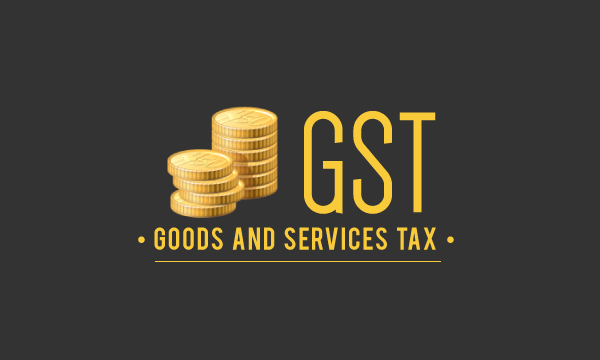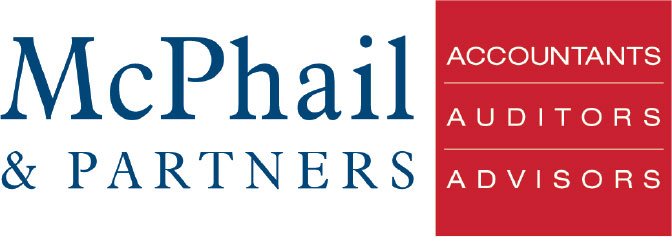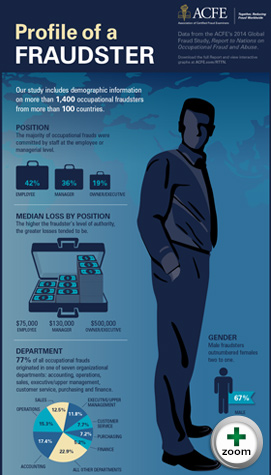ATO property data-matching programme & implications

The scale of the ATO’s property data-matching program announced on 15 December 2015 is breathtaking!
Under the data-matching program the ATO intends to obtain data from various State Revenue offices and tenancies boards for the period 20 September 1985 to 30 June 2017 (ie from the start of the regime until 2 years from now!!). It will include such information as the rental bond number or identifier, the full name and address of the landlord and the period of lease, as well as the date of any contract of property sale and relevant valuation details. Further, the ATO expects that around 31 million records for each year will be obtained and that records relating to 11.3 million individuals will be matched.
And for those taxpayers who have failed to return capital gains from property transactions, the consequences could be quite dramatic – even for those who may have unwittingly failed to do so in view of the apparent complexity of the relevant CGT rules. However, the more interesting issue is the fact that where a taxpayer makes a choice to apply any one of the myriad of CGT concessions which enable them to negate in whole or part a CGT liability on a property, and particularly a main residence, this choice is merely reflected in the way the taxpayer lodges their return for the relevant year.
This in turn may mean that if the ATO comes knocking in respect of any undeclared property gain, a taxpayer may well be able to raise the “defence” that one of these concessions was in fact chosen to justify the non-return of the gain regardless of the taxpayer’s real intention at the time. Alternatively, it may be possible for a taxpayer to seek an amendment of a return to apply or “undo” any such choice to their benefit.
Source- Thomson Reuter’s Weekly Tax Bulletin
The Wheel of Life
The Wheel of Life has been used throughout time for measuring the quality of our lives. Look at the example below and imagine that each piece of the pie represented an area of your own life. Imagine that each line is a spoke in a wheel, with the centre of the wheel representing 0% satisfaction and fulfilment in that area of your life and the outside represents 100% satisfaction and fulfilment with that area of your life.

If this were your Wheel of Life where would you currently be in each area of your life?
Take a few moments to draw a line in each piece of the pie representing where you believe you currently are in that area of your life. When you’ve finished, shade in the areas to get a true sense of the depths of each section and a sense of where to focus your energy.
Here are some suggested headings for each segment, feel free to use these or create your own to represent what is important to you in your life.
• Physical environment
• Business/Career
• Money
• Health
• Family
• Relationships
• Personal growth
• Fun time
If this were a wheel on a car called LIFE, how well would your car run?
How would it run if you were travelling at 25 kilometres per hour? How would it run if you were travelling at 100 kilometres per hour? What if you wanted to be a high achiever? Would the gaps cause you to stay on the road or would you be heading for the ditch?
If you’re like most people, you’re probably experiencing a certain level of discomfort with the quality of your ride! What about if you could find a way to round off your Wheel of Life so that you experienced balance across the areas that matter most to you? Imagine putting your energy, focus and time into the areas that matter most to you…what would that feel like? How would your life look? What would be different?
If there is any part of your current financial situation that you would like to improve, please feel free to con tact our office for a confidential chat.
New Travel Destinations for 2016

Hardcore ABBA fans, football fanatics and Disney devotees will all find a persuasive reason to dust off their passports in the near future – and outdoorsy types, art lovers and adventurous foodies won’t be disappointed either. Be one of the first to see these brand new attractions, all slated to throw open their doors in 2016.
Shanghai Disney Resort, China
Slated to open in spring 2016, Disney’s newest resort – and its first in mainland China – will feature a traditional Magic Kingdom park complete with the largest-yet Enchanted Storybook Castle. Rides and attractions will be scattered around six themed lands, including the pirate-themed Treasure Cove with the high-tech Pirates of the Caribbean: Battle of the Sunken Treasure ride. The Garden of the Twelve Friends at the park’s centre will contain murals of the 12 animals of the Chinese zodiac depicted as Disney characters.
Just outside the Magic Kingdom, the Disneytown entertainment district will have restaurants, shopping and nightlife, including a theatre showing a Mandarin-language version of The Lion King. Two hotels, the Art Nouveau-style Shanghai Disneyland Hotel and the Toy Story Hotel, will accommodate guests in the park (shanghaidisneyresort.com.cn/en/).

Mamma Mia! The Party, Stockholm, Sweden
Take one part restaurant, one part performance, a generous splash of disco, a touch of audience participation and what do you get? A new Mamma Mia!–themed restaurant (mammamiatheparty.com), slated to open in Stockholm’s Gröna Lund amusement park in January 2016. ABBA legend Björn Ulvaeus is behind the new interactive disco-dining experience, a Greek-style taverna where diners tuck into souvlaki while a story unfolds around them. With the chance to take part in the show, and to sing and dance to the hits featured in the world-famous musical, it’s set to be a delicious feast of ABBA fun.
Monnaie de Paris, France
Mid-2016 sees the French capital’s mint (monnaiedeparis.fr) reach the completion of its ‘MetaLmorphoses’ project – a multiphased transformation of its monumental 1.2-hectare site on the Seine’s Left Bank.
Following 2014’s contemporary art exhibitions in the mint’s sumptuous neoclassical building and the 2015 arrival of triple-Michelin-starred chef Guy Savoy’s flagship restaurant, 2016 will unveil the Monnaie de Paris’ previously unseen collections. Along with these will be metalwork and foundry workshop tours, boutiques, Guy Savoy’s MetaLcafé brasserie, and interior streets and a park overlooked by a restored 1690 town house built by Jules Hardouin Mansart, publicly viewable for the first time.

FIFA World Football Museum, Zurich, Switzerland
Zurich is upping its game as it braces itself to welcome the new FIFA World Football Museum, slated to open in spring 2016 and costing a cool Sfr180 million. It’s the moment footie fans have been waiting for with bated breath. Bang in the heart of the city, the 3500-sq-metre whopper of a museum will whisk fans through the history of the game, with a timeline, hall of fame and cinema; recreate stadium fever with a giant football pinball machine; and harbour the world’s biggest collection of football books. Huddled away in the basement is the museum’s very own Mona Lisa: the World Cup Trophy itself.
Surf Snowdonia, Wales
The magical mountains and valleys of Snowdonia are a great place for walkers and adventure sports fans. The natural landscape is increasingly being augmented by impressive manmade facilities – Snowdonia now boasts Europe’s longest zip line and a vast underground trampolining centre. But its most radical attraction will have been freshly opened come 2016: a £12 million, 300m-long artificial surf lagoon that uses local rainwater to produce a consistent, barreling 2m wave every sixty seconds. It’s a world first, and one that doesn’t just appeal to the hardcore – the wave’s size varies in different parts of the lagoon, and its consistency helps beginners. Surf kayaking, stand up paddle boarding and blobbing are also on offer (surfsnowdonia.co.uk).

National Gallery Singapore
Singapore boasts several world-class museums, but if you only have time to see one in 2016, make it the National Gallery Singapore. Occupying two of central Singapore’s most historical buildings – the former City Hall and Supreme Court – the enormous gallery space, unveiled during the city-state’s 50th birthday celebrations in November 2015, will showcase Southeast Asian art from the 19th century to the present day. After admiring the thousand-odd artworks in the painstakingly restored colonial courtrooms and council chambers, don’t miss the fifth-floor rooftop garden with its superb views across the Padang towards Marina Bay.
BASK, Gili Meno, Indonesia
You might think you’d be more likely to bump into David Hasselhoff at a German karaoke bar, but if you’re headed to Indonesia you might just see him by the pool. For The Hoff is the face of BASK (baskgilimeno.com), a luxury villa-resort development currently under construction on Gili Meno, near Bali. Situated on a private white-sand beach, BASK will boast a world-class restaurant, chic beach club, state-of-the-art spa and its very own underwater sculpture park. Not to mention a star in its midst - the entertainer is said to be eyeing off a three-bedroom ‘Hoff Hideaway’ vacation villa of his own here.
Louvre Abu Dhabi, UAE
In true Gulf style, the Louvre Abu Dhabi is magnificently ambitious on every level. The futuristic, dome-shaped building is an architectural feat in itself, appearing to float above a man-made lake. Permanent collections will represent art throughout the ages, including everything from Chinese Buddhist carvings to Italian oil paintings, while France’s most renowned art institutes are to lend Abu Dhabi 300 additional works – Van Gogh, Monet and da Vinci masterpieces among their number. Louvre Abu Dhabi’s development has involved plenty of controversies. But finally opening in 2016, it has the potential to rival the world’s greatest art museums and be a real cultural game-changer for the Middle East.

National Museum of African American History and Culture, Washington, DC, USA
On its inauguration the NMAAHC (nmaahc.si.edu) will become America’s first national museum devoted exclusively to African American life, history and culture. The 10-storey space will house artefacts from all over the country and history – from Harriet Tubman’s 1876 hymn book, to a Jim Crow-era segregated railcar, to banners and photographs from the #BlackLivesMatter demonstrations.
Source: http://www.lonelyplanet.com/travel-tips-and-articles/new-openings-in-2016
Three Trends Family Businesses Should Watch

Generational Handovers with Baby Boomers planning their retirement, family businesses everywhere are facing a high-risk changing of the guard. As the Baby Boomer generation moves into their retirement years, Australian family businesses are facing the largest intergenerational transfer of wealth and leadership in history. Recent statistics shows that nearly two-thirds of current family CEOs are aged over 50 and two-thirds of family businesses intend to pass ownership on to the next generation in the next five years. Unfortunately, surveys have shown that family businesses are not prepared for succession. A 2013 national survey by KPMG found that just one-third of Australian family businesses considers themselves succession-ready.
Success rates are poor
Statistics about intergenerational business and wealth transfer are grim: the vast majority of families lose their wealth by the second generation. By the third generation, the situation is worse; 90 percent have lost most or all of their wealth. The reasons? Succession failures usually happen because of poor planning, poor communication, and family conflict after the death of a parent. Solution: Start planning for succession now. Usually, a five- or 10-year horizon is necessary adequately prepare the business and its new leader for the transition. Proper planning involves a business valuation exercise and the establishment of formal timelines. Family businesses often have the added complications of competing successors, as well as family members having differing perspectives on the future of the business. Business leaders who are uncertain about how to go about creating a succession plan would do well to attend one of the many courses offered on succession, or consult with a family business adviser who can provide recommendations.
Multiple generations in the kitchen
Many family businesses are moving into the second or third generation. With life expectancies increasing and current leaders reluctant to retire, businesses will have to learn to cope with the perspectives and priorities of multiple generations. Just as "too many cooks spoil the broth", too many generations can cause a variety of problems within a business when their roles aren't defined, or younger generations feel shut out of decision making by their elders. Solution: Communication, communication, communication. Giving family members space to air grievances and have their opinions heard is critical to the healthy functioning of a family business. Many business leaders, accustomed to being the family visionary, aren't able to let go of their privacy when new generations start to take leadership roles. Creating succession plans that clearly outline when and how new leaders are to step up can help smooth the eventual transfer of leadership. However, until then, allowing each generation of the family to feel included in the strategic direction of the firm is vital to family (and business) harmony. Retreats, family councils, and other non-business forums can also offer opportunities to bridge the generational gap.
Non-traditional structures
The definition of a "family business" and the makeup of its family and non-family employees have evolved considerably in the past and will continue to change. Families are complex entities and the introduction of second spouses, half siblings, adopted siblings and new family members makes ownership and management issues complicated if any businesses have non-family employees and executives who contribute to business success at a very high level. Not all family members participate in the family business the same way. Finding ways to recognise contributions to the business while defining ownership is critical to maintaining business function while avoiding family drama. Solution: Family businesses that intend to become multi-generational concerns should separate the ownership structure of a business from its management through the issuance of shares, or another mechanism. This separation has the dual effect of keeping ownership of a firm within the family while allowing for professional management. Families should also institute financial agreements such as shareholder agreements, pre-marital agreements, and other documents that define expectations and protect family wealth. •
This article has been written by Kim Harland is director, client services, at FINH
7 Tips for Business Success

Business structures and restructures: Is your structure working against you? Many business owners don’t realise that the business has outgrown its structure until something comes up – and this something is usually something negative.
1. Are your assets at risk?
Legal actions by employees, customers and suppliers as well as divorce are the two primary risk issues for many business operators. If you have been operating as a sole trader or as a partner in a partnership or have simply been holding all business assets in a single entity, your structure may not provide sufficient asset protection. If any personal assets or valuable assets of the business are held in the same entity that carries on the trading operations of the business, those assets may be at risk. To protect your assets, it is preferable to separate as many valuable assets as possible from the trading operations.
2. Can you introduce new business partners or investors?
If you want to provide key employees or investors with an equity interest in your business, your current business structure may not allow for this. For example, it is not possible to provide fixed entitlements to the profits of a business operated by a discretionary trust.
Entities such as companies and unit trusts are a much more effective vehicle to facilitate the introduction of new equity partners as they can provide a fixed interest in the income and capital gains generated by the business. New investors can also potentially claim interest deductions on funds borrowed to invest in the company or unit trust.
3. Reinvesting in growth
Reinvesting profits in your business is important if you have or expect a strong growth path. Some business structures, however, don't readily facilitate profits being retained by the business. For example, it is more difficult for a trust to retain profits, as the trustee of a trust is taxed on these profits at penalty tax rates if they are not distributed to the beneficiaries of the trust each year. Compared to private companies where profits are taxed at a maximum rate of 30% or 28.5% and can be retained in the company without the need to distribute these profits annually.
4. Can you take money out of the business?
When you first established your business, it’s hard to know what your profits are going to be and for many, there are a few lean years of losses to get things up and running. Your personal circumstances might have changed as well – marriage, children, a spouse, etc. These changes can drive the need for change. The structure of your business has a direct impact on how money flows through it to the investors. For example, one of the benefits of a discretionary trust is that the income of the trust can be distributed to any of the beneficiaries of the trust in any proportion and that proportion can change annually.
5. Impeding international expansion
If you are contemplating expanding overseas, this can significantly increase the complexity of your operations. All of a sudden you maybe exposed to a new set of Australian tax rules in addition to the legal and regulatory requirements that will need to be considered in the foreign jurisdiction. On top of the complexity, control may also become an issue. The right business structure can limit your exposure to risk.
6. Access to tax incentives and concessions
Research & Development (R&D) concessions are only available to companies. If you have a significant level of R&D activity that could potentially qualify for the tax incentives, it’s worth exploring your options if you are not already in a company structure.
7. Can you exit your business?
The business lifecycle has shortened considerably with fewer business owners seeking to create empires but more opportunistic business models. The wrong structure will limit your ability to sell your business interests and may have a dramatic and detrimental impact on the amount of tax you pay on the sale proceeds. It's important that you explore this issue well before you plan to sell or reduce your stake in the business.
For more information on how to effectively structure your business, please contact one of our managers at our office.
Unauthorised withdrawals from a SMSF

Trustees of Self-Managed-Superannuation Funds (SMSF) beware! In a recent case, the Federal Court found that the trustees of a SMSF made unauthorised withdrawals from their fund, thereby contravening the Superannuation Industry Supervision (SIS) Act 1993. The trustees of the SMSF were a husband and wife who were the only members of their SMSF. The members of the fund had withdrawn significant amounts from their SMSF over a 4 year period (2009, 2010, 2011 and 2012 financial years) to meet their living and borrowing expenses following the failure of a business that they had owned.
These members' loans were unsecured, had no interest rate and no repayment term. Inaddition, the Income tax returns and auditor reports lodged on the SMSF's behalf raised the possibility of contraventions of the SIS Act for the four financial years in question and the Commissioner conducted a further audit of the fund. The ATO concluded from that audit that there were several contraventions of the SIS Act in relation to the management of the fund. The Commissioner disqualified each of the trustees from being a trustee of a superannuation entity under SIS Act section 126A and subsequently commenced proceedings for contraventions of the SIS Act.
As a result of the above findings, the Court held that the contraventions were serious and imposed civil penalties on the trustees. The appropriate pecuniary penalty was held to be $20,000 for each of the trustees.
Ultimately, the trustees transferred what remained of their benefits in the SMSF to a public fund.
In conclusion, before making any decisions to access your superannuation we strongly suggest you speak with your financial adviser; a simple phone call could save you thousands!
You can contact the team at McPhails on 03 9898 9221.
Success Will Come and Go, But Integrity Is Forever

If I could teach only one value to live by, it would be this: Success will come and go, but integrity is forever. Integrity means doing the right thing at all times and in all circumstances, whether or not anyone is watching. It takes having the courage to do the right thing, no matter what the consequences will be. Building a reputation of integrity takes years, but it takes only a second to lose, so never allow yourself to ever do anything that would damage your integrity.
We live in a world where integrity isn’t talked about nearly enough. We live in a world where “the end justifies the means” has become an acceptable school of thought for far too many. Sales people overpromise and under deliver, all in the name of making their quota for the month. Applicants exaggerate in job interviews because they desperately need a job. CEOs overstate their projected earnings because they don’t want the board of directors to replace them. Entrepreneurs overstate their pro formas because they want the highest valuation possible from an investor. Investors understate a company’s value in order to negotiate a lower valuation in a deal. Customer service representatives cover up a mistake they made because they are afraid the client will leave them. Employees call in “sick” because they don’t have any more paid time off when they actually just need to get their Christmas shopping done. The list could go on and on, and in each case the person committing the act of dishonesty told themselves they had a perfectly valid reason why the end result justified their lack of integrity.
It may seem like people can gain power quickly and easily if they are willing to cut corners and act without the constraints of morality. Dishonesty may provide instant gratification in the moment but it will never last. I can think of several examples of people without integrity who are successful and who win without ever getting caught, which creates a false perception of the path to success that one should follow. After all, each person in the examples above could have gained the result they wanted in the moment, but unfortunately, that momentary result comes at an incredibly high price with far reaching consequences. That person has lost their ability to be trusted as a person of integrity, which is the most valuable quality anyone can have in their life. Profit in dollars or power is temporary, but profit in a network of people who trust you as a person of integrity is forever.
Every one person who trusts you will spread the word of that trust to at least a few of their associates, and word of your character will spread like wildfire. The value of the trust others have in you is far beyond anything that can be measured. For entrepreneurs it means investors that are willing to trust them with their money. For employees it means a manager or a boss that is willing to trust them with additional responsibility and growth opportunities. For companies it means customers that trust giving them more and more business. For you it means having an army of people that are willing to go the extra mile to help you because they know that recommending you to others will never bring damage to their own reputation of integrity. Yes, the value of the trust others have in you goes beyond anything that can be measured because it brings along with it limitless opportunities and endless possibilities.
Contrast that with the person who cannot be trusted as a person of integrity. Warren Buffet, Chairman and CEO of Berkshire Hathaway said it best:, “In looking for people to hire, look for three qualities: integrity, intelligence, and energy. And if they don’t have the first one, the other two will kill you.” A person’s dishonesty will eventually catch up to them. It may not be today, and it may not be for many years, but you can rest assured that at some point there will always be a reckoning.
A word of advice to those who are striving for a reputation of integrity: Avoid those who are not trustworthy. Do not do business with them. Do not associate with them. Do not make excuses for them. Do not allow yourself to get enticed into believing that “while they may be dishonest with others, they would never be dishonest with me.” If someone is dishonest in any aspect of his life you can be guaranteed that he will be dishonest in many aspects of his life. You cannot dismiss even those little acts of dishonesty, such as the person who takes two newspapers from the stand when they paid for only one. After all, if a person cannot be trusted in the simplest matters of honesty then how can they possibly be trusted to uphold lengthy and complex business contracts?
It is important to realize that others pay attention to those you have chosen to associate with, and they will inevitably judge your character by the character of your friends. Why is that? It is best explained by a quote my father often says when he is reminding me to be careful of the company I am keeping: “When you lie down with dogs you get fleas.” Inevitably we become more and more like the people we surround ourselves with day to day. If we surround ourselves with people who are dishonest and willing to cut corners to get ahead, then we’ll surely find ourselves following a pattern of first enduring their behavior, then accepting their behavior, and finally adopting their behavior. If you want to build a reputation as a person of integrity then surround yourself with people of integrity.
Article written by Amy Rees Anderson, sourced from Forbes Entrepreneurs.
GST

Goods and services tax (GST) is a broad-based tax of 10% on most goods, services and other items sold or consumed in Australia. GST commenced in Australia on 1 July 2000 and was introduced to replace a range of State and Federal taxes, duties and levies.
Only certain businesses are required to register for GST, currently those businesses with a GST turnover of greater than $75,000 per annum and $150,000 per annum if you are a Not-For-Profit organisation. If you are registered for GST, then you must complete and lodge your Business Activity Statement (BAS) at the end of each period (monthly or quarterly dependent on your turnover) with the ATO and remit your GST accordingly.
What now for the GST?
Fifteen years after the introduction of the GST in Australia, debate still rages over what should be taxed and whether the GST rate should increase.
The Treasurers’ workshop late last month resolved to keep the GST rate at 10% but enable a series of other changes. We look at the key areas of change:
• GST on online products
From 1 July 2017, the GST will be broadened to apply to all goods purchased online and imported from overseas. Currently, GST does not apply to inbound goods under $1,000.
The Treasurers have opted for a vendor registration model which means that they are relying on businesses based overseas and selling into Australia to register and comply voluntarily with Australian tax law. The problem is how to collect the tax from businesses that have no obligation to comply and the Government has no jurisdiction to pursue tax owing. It is almost impossible to bring all but the largest of providers into the GST net.
• The ‘Netflix tax’: GST on digital goods
Draft legislation released on Budget night broadens the GST to digital products and other imported services supplied to Australian consumers by foreign entities in a similar way to equivalent supplies made by Australian businesses.
Expected to generate $350m over 4 years, the tax treats streaming or downloading of movies, music, apps, games, e-books as well as other services such as consultancy and professional services in a similar way to local suppliers. In some cases, the GST liability might shift from the supplier to the operator of an electronic distribution service where those operators have responsibility for billing, delivery and terms and conditions.
GST on digital products is intended to apply from 1 July 2017.
How people rationalise fraud - Kelly Richmond Pope
If you ask people whether they think stealing is wrong, most of them would answer yes. And yet, in 2013, organizations all over the world lost an estimated total of $3.7 trillion to fraud.
Kelly Richmond Pope explains how the fraud triangle, (developed by criminologist Donald Cressey) can help us understand how seemingly good people can make unethical decisions in their daily lives.
Research shows that 40% of frauds are reported by a whistle-blower. If you saw a fraudulent act, would you report it?
Box Hill Golf Club - Interview

Two years ago marked a major milestone in the history of the Box Hill Golf Club – the centenary of the name, Box Hill Golf Club. The Box Hill Golf Club is a client of McPhail & Partners and we were delighted when Russell Donovan, General Manager, agreed to sit down with us and reveal what it takes to manage this great club.
1. How did you get involved with Box Hill Golf Club?
It has been a long involvement. I literally lived 500 metres away when I was growing up, I played all my junior golf at Box Hill and my family was heavily involved in the club. After my schooling, I worked for the Commonwealth Bank in business banking, then left the bank and managed a large pub in Hawthorn for five years. Long and late hours took its toll so I decided to try to get into golf club management, which resulted in General Manager’s positions at Churchill Park Golf Club, Mornington Golf Club and then to come full circle, back to Box Hill Golf Club as the General Manager.
2. What do you love most about your job or (this industry), and what do you see as the biggest challenge golf clubs face?
Everyone who visits the club is coming for an enjoyable time. Whether this is to play golf, coming to eat in the bistro or attending a function, we are in the hospitality business, in a role that I thoroughly enjoy. Concerning challenges, most golf clubs are struggling with retaining members. We are fortunate to be located in the Box Hill area, however maintaining a golf course and a clubhouse that is open 18 hours a day has its economic challenges. As you read regularly in the paper, penalty rates do affect a business of this size.
3. How do you rate your golfing abilities, do you play often?
I used to be a good player in my teens, now days with a busy business to run and a young family; it does not leave much time for golf!
4. Which is your favourite course in the world and why?
I was fortunate enough to attend the US Masters this year at a golf course called Augusta National. It would be the most pristine piece of land in the world. Every piece of grass is perfectly manicured, there was not one leaf on the ground, and if a tree dies, they replace it with a replica and this can mean a 30-foot tree is simply planted where the old one stood. But my favourite courses were in a place called Bandon Dunes, on the coast of Oregon in the United States.
5. Who is your favourite golfer?
I honestly do not have a favourite golfer, but always like an Aussie to win.
6. Tell us about a rewarding moment for you in the business and your involvement in it?
The club is very lucky that it can give back to the community. Every year, the club hosts a charity day for Eastern Health (Box Hill hospital), which raises approximately $25,000 each year. Our ladies committee hosts a second charity day and this raises in excess of $10,000 each year. We receive constant requests for donations such as golf rounds, bistro vouchers etc. that can be used at school/kindergarten auctions which we provide. Although we are a large business, we fully understand that we are a community-based club and will always continue to be community focused.
7. What untapped potential do you see with the golf club?
Box Hill Golf Club is different to most golf clubs in that we do allow social members, (at a cost of $2) to be members at the golf club, which allows them to visit the golf club, have a bite to eat in the bistro and take in the views of the course. The club undertook a renovation in the bistro/members area a couple of years ago and business has increased significantly in these areas. The club runs a very successful give golf a go program which is targeted at beginner ladies and the club is heavily focused on junior development.
8. How does BHGC differentiate itself from its competitors?
The simple response is that we are not just a golf club! The clubs bistro is open seven days a week, lunch and dinner and overall, we pride ourselves on being a friendly club where members and guests can visit in a safe, friendly environment with great views.
9. What do you do when you are not working?
I would love to say fitness fanatic, but running a golf club is a busy lifestyle so when I do get home, there is nothing better than playing with my two kids, aged 7 and 4, (when they are behaving). They are just starting to get into sport, so I am enjoying running after them.
Thank you Russell and we look forward to joining you in a game of golf soon at the Box Hill Golf Club!
[team size="one-half" last="true" name="Russell Donovan" title="General Manager, Box Hill Golf Club" icon="http://www.mcphail.com.au/wp-content/uploads/2015/08/August-Client-Interview-e1439869878857.jpg" facebook="" twitter="" gmail="" skype="" youtube="" linkedin="" ][/team]












